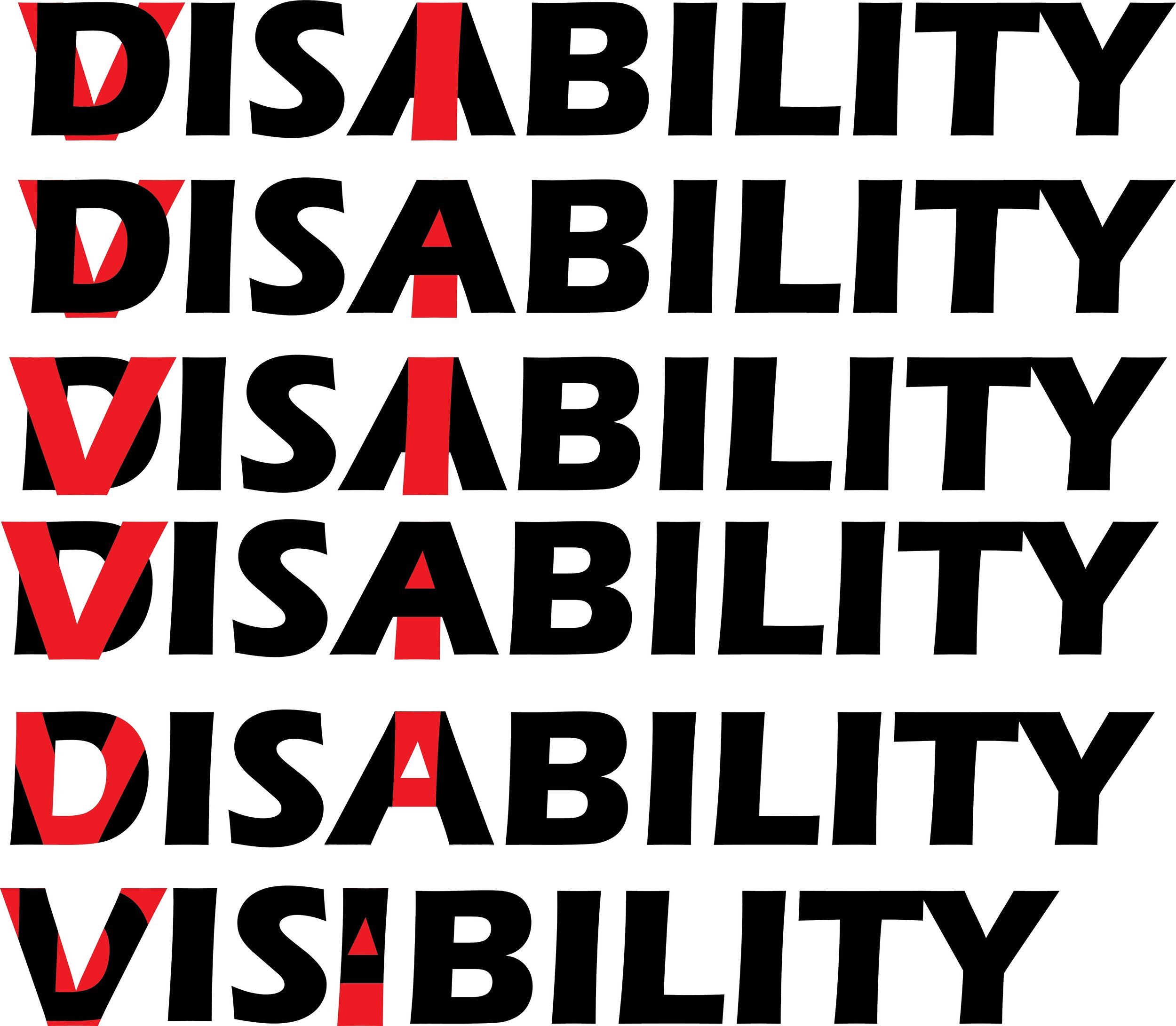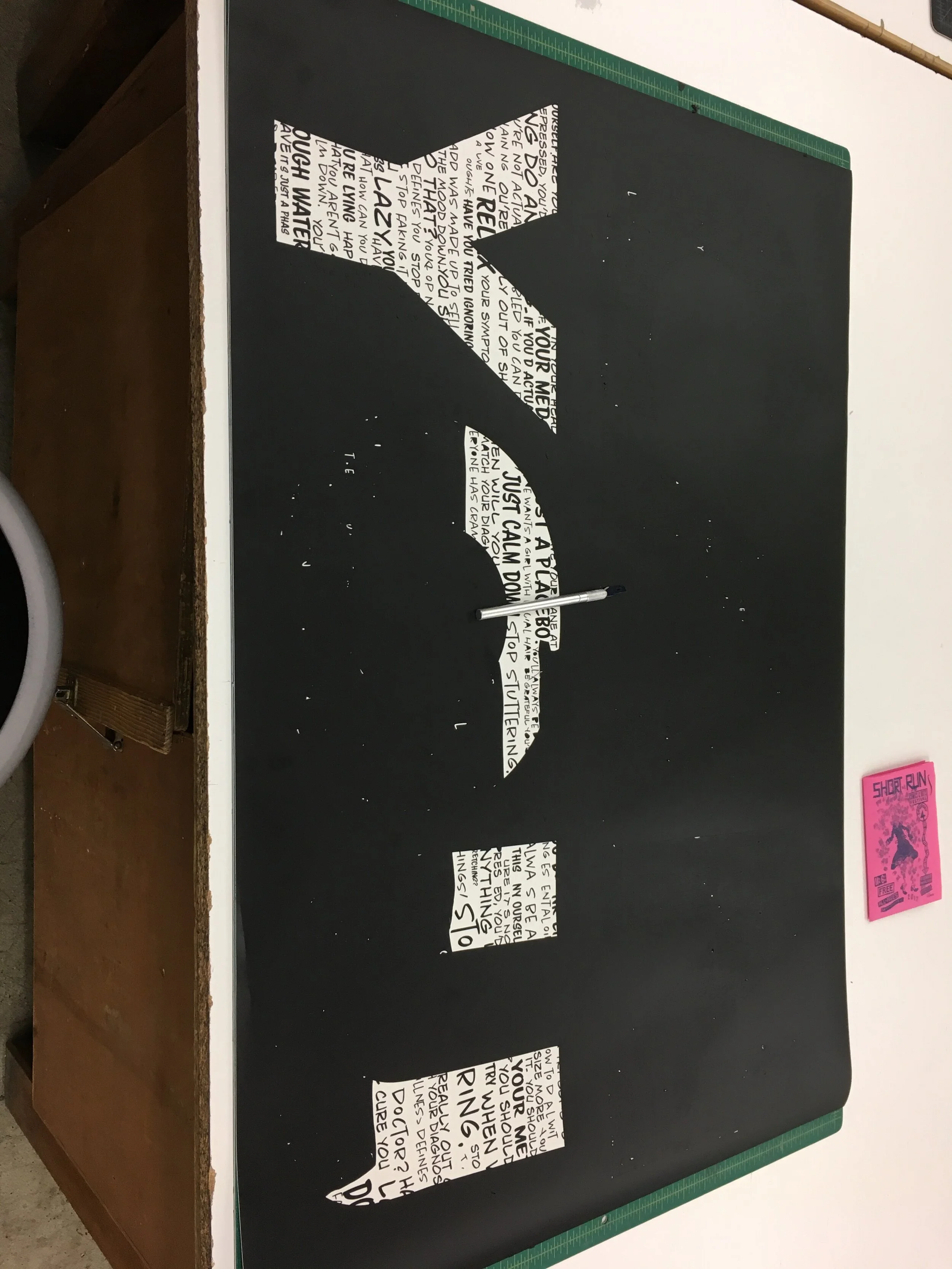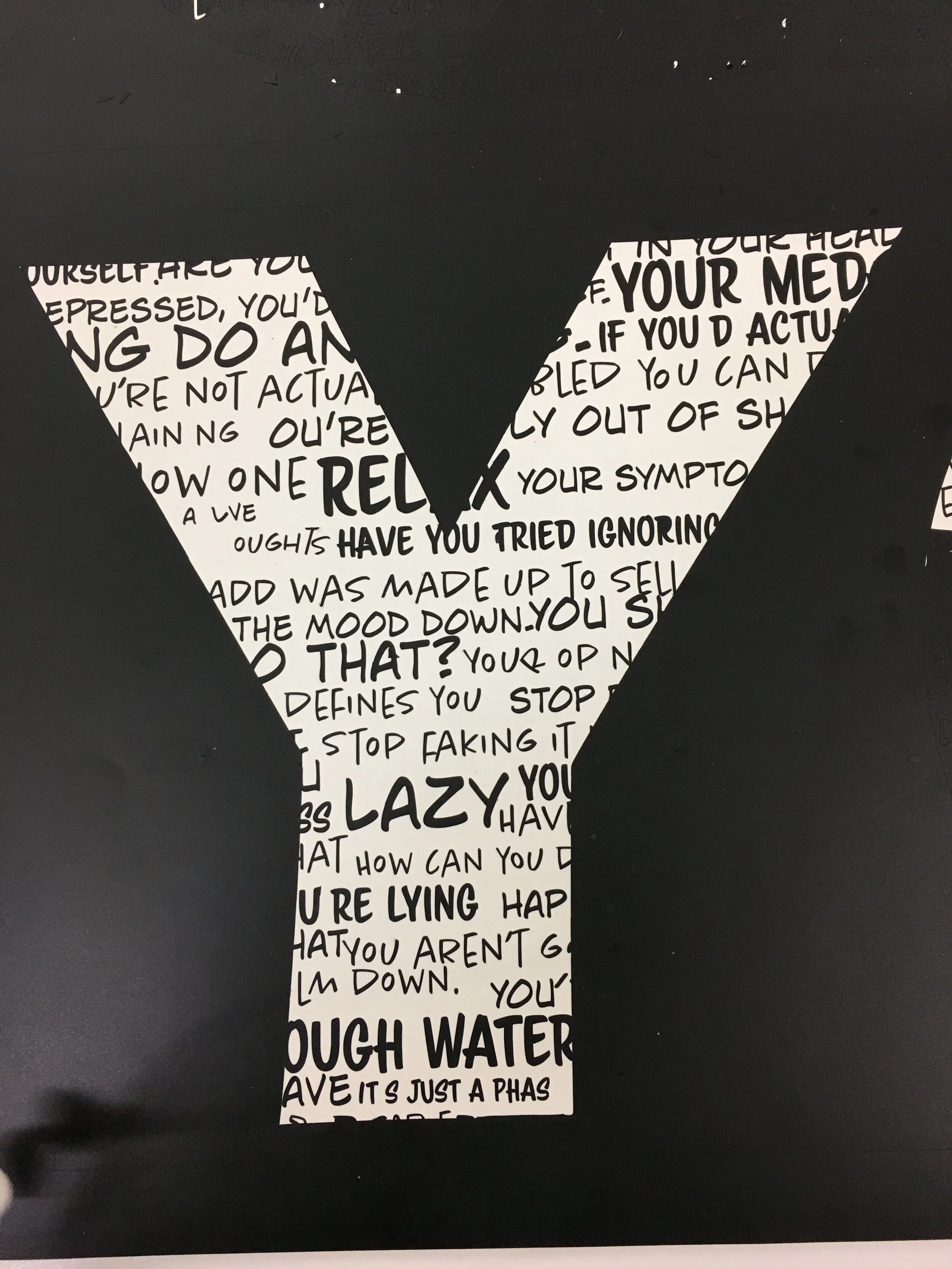Can You See Me Now?
This installation project was a group project within the a first year design class. The project parameters were to create a 24 hour installation on the 4th floor of our school’s main building.
Our group chose to alter the existing windows with a statement on disability and ‘invisible’ disabilities. Each window had a theme, the leftmost window (as seen in the video) was mental illness, the center window themed around the invisible aspect, and the right window themed around physical disability and the spoon theory.
For this project I was responsible for the design, preparing, application and ultimate removal of all vinyl across each of the three windows and the bar on the right side of the video. I was also tasked with gathering information for the design in form of a questionnaire to create the internal text for "‘CAN YOU SEE ME NOW?”.
See below for more information and process photos!

A photo of the center window and the words on it. This was meant to be difficult to see to the naked eye and was rather difficult to photograph head on.

A process photo of the installation featuring me applying the vinyl.

A close-up of the 'N' on the center window, showing the smaller text within.

This was early prototyping for the title of the project. The final title was the third one from the top, created by layering vinyl.

A process photo of the prepping of the vinyl. This process is called "weeding" and is when the excess vinyl is removed from around the cuts.

A close up of the weeded 'Y' before masking and removal from the factory backing.
More information on this project!
What does the right window mean?
The right window represented mental illness and disabilities that can stem from being unable to connect mind and body. This window had broken mirror pieces on it to both obscure the out side view and the view of self within these mirrors. We felt like this helped us represent a feeling of confusion and disconnect from the outside world and the disconnect to self that is often felt by those with mental illness and disability. The disabilities we referenced were depression, eating disorders, gender/body dysmorphia, anxiety and personality disorders. There were also small clusters of text on some of the mirrors that gave mental health statistics for college students and college age adults.
Are you disabled? Why did you focus on disability for this installation?
I identify as someone who is technically disabled. I do suffer from chronic Eczema, asthma and have suffered from mental illness in the past. Though as someone who only has minimal alterations to a ‘normal’ daily life, I do not feel that I would be labelled as disabled by an abled peer.
I am not at liberty to disclose the disability status of my fellow collaborators.
We chose disability for this installation because it is a world altering experience. The windows in this building showed one view of the world, and we sought to change that view and bring attention to something that abled people don’t tend to see.
What does the center window mean?
The center window is primarily themed around invisible disability.
An invisible disability is any disability that may not been seen as ‘valid’ or a ‘real’ disability. Some things that fall into this category are mental illness, ADHD / ADD, Narcolepsy, Fibromyalgia, IBS, Diabetes, PTSD, Epilepsy and many others. These disabilities may not be taken as seriously as visible disabilities that are more obvious, such as wheelchair users, amputees and blind people.
While all disability (and ability) is a spectrum and each person is different, this window speaks to those who have had their disability disregarded as a serious medical condition. The words “CAN YOU SEE ME NOW?” are made up of other words, terms and sentences that a disabled person has heard or been told about their disability by an abled person. These were collected via Google Form by those who self-identified as a disabled person.
How did you create the vinyl stickers?
First, I would design the text in Adobe Illustrator. Next, I would take it to the cutter and it would be cut out. At Cornish College of the Arts, I had access to a 48” vinyl cutter. After that, I would weed the vinyl to reveal the final look.
After the vinyl was weeded, it was taped over with an adhesive paper tape. This was taken to the window where the backing was removed and the tape and vinyl was applied to the final surface. After the vinyl was stuck down, the masking tape was removed.
What does the left window mean?
The left window represented physical disability and the Spoon Theory of disability.
The Spoon Theory of disability was created by Christine Miderandino in her 2003 essay “The Spoon Theory”. In short, the theory is that disabled people often have to expend more energy to carry out tasks that abled people may find easy. Energy can be shown in spoons and is relative to each person, and changes day to day.
For this window we chose to block out the window and make the only views out in the shape of a spoon. These were to represent that with one spoon you could only see very little of the world around you, but that four spoons was too much energy to expend on a small view.
What do the small words say?
The small words are made up of 25 responses to the question “What negative and unhelpful comments have people made about your disabilities?”. Here are a few of the responses:
You're not ACTUALLY disabled, you can do tons of things!
Are you sure it's not all in your head?
You know what will cure that pain? Honey bee venom.
Have you tried using essential oils?
Just calm down
These are some of the tamer answers.


